122 posts
Latest Posts by thehkr - Page 3


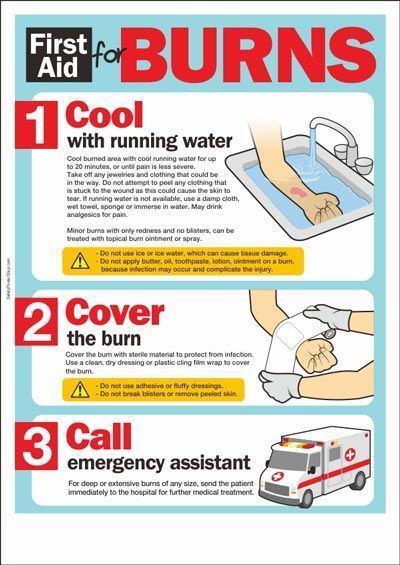



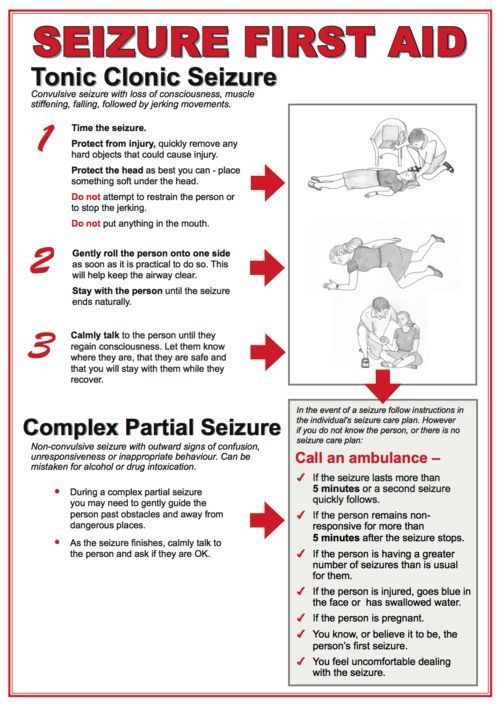
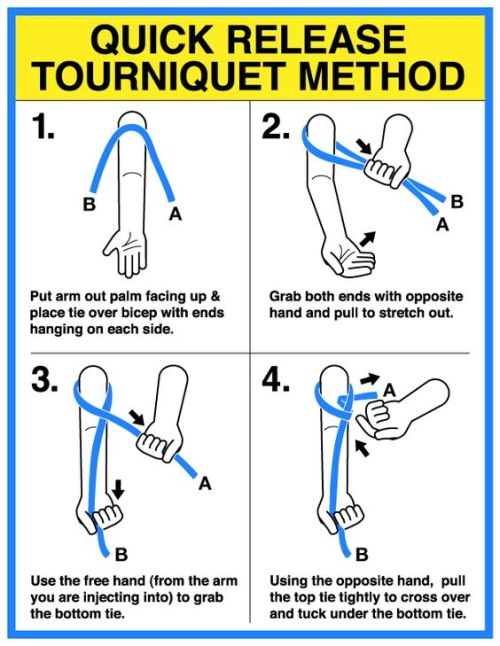


Survival Skills
Kung Fu feiyue shoes on: http://www.icnbuys.com/feiyue-shoes.
You’ve Heard “Houston, we’ve had a problem,” But Do You Know The Mission It’s From?
It’s the 50th anniversary of the Apollo 13 mission! NASA’s “successful failure,”Apollo 13 was to be the third lunar landing attempt, but the mission was aborted mid-flight after the rupture of a service module oxygen tank. The crew never landed on the moon, but due to the dedication and ingenuity of Mission Control, made it back to Earth safely. We’ve put some of the most important numbers of the Apollo 13 mission in perspective. Check it out!









Listen to the mission in real time, HERE.
Follow NASA History on Twitter and Facebook for more interesting information about aerospace history!
Check out the stats of all the Apollo Missions in the free e-book Apollo by the Numbers, HERE.
On Top of The World – Literally
What’s one perk about applying to #BeAnAstronaut? You’re one step closer to being on top of the world.

Part of the job of a NASA astronaut is a task called spacewalking. Spacewalking refers to any time an astronaut gets out of a vehicle while in space; it is performed for many reasons such as completing repairs outside the International Space Station, conducting science experiments and testing new equipment.

Spacewalking can last anywhere from five to eight hours, and for that reason, astronauts’ spacesuits are more like mini-spacecraft than uniforms! Inside spacesuits, astronauts have the oxygen they need to breathe, water to drink and a bathroom!

Spacesuits also protect astronauts from the extreme environment of space. In Earth orbit, conditions can be as cold as minus 250 degrees Fahrenheit. In the sunlight, they can be as hot as 250 degrees. A spacesuit protects astronauts from those extreme temperatures.

To stay safe during spacewalks, astronauts are tethered to the International Space Station. The tethers, like ropes, are hooked to the astronaut and the space station – ensuring the astronaut does not float away into space.

Spacewalking can be a demanding task. Astronauts can burn anywhere from ~1500-2500 calories during one full assignment. That’s about equal to running 2/3 of a marathon.

Does spacewalking sound like something you’d be interested in? If so, you might want to APPLY to #BeAnAstronaut! Applications are open until March 31. Don’t miss your chance to!

Want to learn more about what it takes to be an astronaut? Or, maybe you just want more epic images. Either way, check out nasa.gov/astronauts for all your NASA astronaut needs!
Make sure to follow us on Tumblr for your regular dose of space: http://nasa.tumblr.com
The Path to High Adventure Begins With Scouting!

Former NASA astronaut and Girl Scout alumna Jan Davis eating Girl Scout Cookies inside the shuttle Endeavour on Sept. 12, 1992. Image credit: NASA
Leadership, service, being prepared and doing your best – these qualities are exemplified by our astronauts, but are also shared by the Girl Scouts! Our astronaut corps has many scout alumnae, and over the years they’ve been breaking barriers and making names for themselves at NASA.
Today marks the 108th birthday of Girl Scouts in the United States, which has been inspiring generations of girls through leadership and STEM (science, technology, engineering and mathematics) activities to empower the explorers of today and tomorrow. To celebrate, we’re highlighting some of our Girl Scout alumnae over the years!

NASA astronaut and Girl Scout alumna Sunita Williams, who served as an International Space Station commander and spent 322 days in space during two spaceflight expeditions.
Former Scouts have served as crew members on numerous spaceflight missions.

From left: Susan Helms, the first female International Space Station crew member; Eileen Collins, the first woman to pilot and command a space shuttle; and Dr. Kathy Sullivan, the first American woman to perform a spacewalk.
Former Girl Scouts flew on more than one-third of the space shuttle missions and were pioneering forces as women began making their mark on human spaceflight. The first female crew member to serve on the International Space Station, the first to pilot and command a space shuttle and the first American woman to spacewalk were all Scout alumnae.
They continue to break records, such as the first three all-woman spacewalks…

Girl Scout alumnae and NASA astronauts Christina Koch and Jessica Meir made history when they conducted the first ever all-woman spacewalk on Oct.18, 2019. They went on to complete two more spacewalks, successfully completing their task of upgrading the space station’s battery charge/discharge unit. Christina and Jessica’s historic spacewalk was a testament to the growing number of women (and Girl Scouts) joining our astronaut corps; it is a milestone worth celebrating as we look forward to putting the first woman on the Moon with our Artemis Program!
….and the longest spaceflight ever by a woman!

NASA astronaut Christina Koch smiles for a selfie while completing tasks during a spacewalk outside the International Space Station.
Koch went on to seal her name in the record books by surpassing Peggy Whitson’s record for the longest single spaceflight in history by a woman!
Understanding how the human body adjusts to things like weightlessness, radiation and bone-density loss is crucial as we look forward to embarking on long-duration spaceflights to the Moon and Mars. Thanks to former astronaut Scott Kelly’s Year in Space mission, we’ve been able to observe these changes on a biological male. Now, thanks to Christina’s mission, we are able to observe these changes on a biological female.
Girl Scout alumnae will also help lead human exploration farther than ever before as members of our Artemis generation!

From left: NASA astronauts Kayla Barron, Jessica Watkins and Loral O’Hara
On January 10, 2020 we welcomed 11 new astronauts to our ranks – including three Girl Scout alumnae! As part of the first-ever class of astronauts under our Artemis lunar exploration program, Kayla Barron, Jessica Watkins and Loral O’Hara are now qualified for assignments including long-duration missions to the International Space Station, the Moon and Mars.
They took a moment after graduation to share inspiration and insight for current and future Scouts!
Q: A question from the Girl Scouts: What inspires you?
A: “Being a part of an awesome team has always been what inspires me. Whether it’s your Girl Scout troop, a sports team, your class – I think for me always the people around me who push me to succeed and support me when I make mistakes and help me become my best self is what inspires me to show up and do my best.” - NASA astronaut Kayla Barron
Q: How has being a Girl Scout helped you in becoming an astronaut?
A: “Being in the Girl Scouts when I was younger was really cool because, well, first it was just a group of my friends who got to do a lot of different things together. But it really gave us the opportunity to be exposed to a lot of different areas. Like we’d get to go camping. We’d get to ride horses and learn all of these different skills, and so that variety of skill set I think is very applicable to being an astronaut.” - NASA astronaut Loral O’Hara
Q: What would your advice be for the next generation of Girl Scout astronauts?
A: “My advice would be to find something that you’re passionate about. Ideally something in the STEM fields: Science, Technology, Engineering or Mathematics, and to pursue that thing that you’re interested in. Pursue that passion, whatever it is. And don’t give up on your dreams, and continue to follow them until you arrive where you want to be.” - NASA astronaut Jessica Watkins
To all the Girl Scouts out there, keep reaching for the stars because the sky is no longer the limit!
Astronaut applications are OPEN until March 31 for the next class of Artemis generation astronauts who will embark on missions to the International Space Station, the Moon and Mars. If you’re interested in applying to #BeAnAstronaut or just want to learn more, click HERE.
Make sure to follow us on Tumblr for your regular dose of space: http://nasa.tumblr.com

Ricardo Rodriguez - Waveloop

イエス・キリストbotさんのツイート: “←語彙力がある人 語彙力がない人→… ”
The Rover Doctor is in: The Anatomy of a NASA Human Exploration Rover Challenge Rover
Exploration and inspiration collide head-on in our Human Exploration Rover Challenge held near Marshall Space Flight Center in Huntsville, Alabama, each April. The annual competition challenges student teams from around the world to design, build and drive a human-powered rover over a punishing half-mile course with tasks and obstacles similar to what our astronauts will likely have on missions to the Moon, Mars and beyond.

The anatomy of the rover is crucial to success. Take a look at a few of the vital systems your rover will need to survive the challenge!
The Chassis

A rover’s chassis is its skeleton and serves as the framework that all of the other rover systems attach to. The design of that skeleton incorporates many factors: How will your steering and braking work? Will your drivers sit beside each other, front-to-back or will they be offset? How high should they sit? How many wheels will your rover have? All of those decisions dictate the design of your rover’s chassis.
Wheels

Speaking of wheels, what will yours look like? The Rover Challenge course features slick surfaces, soft dunes, rocky craters and steep hills – meaning your custom-designed wheels must be capable of handling diverse landscapes, just as they would on the Moon and Mars. Carefully cut wood and cardboard, hammer-formed metal and even 3-D printed polymers have all traversed the course in past competitions.
Drivetrain

You’ve got your chassis design. Your wheels are good to go. Now you have to have a system to transfer the energy from your drivers to the wheels – the drivetrain. A good drivetrain will help ensure your rover crosses the finish line under the 8-minute time limit. Teams are encouraged to innovate and think outside the traditional bike chain-based systems that are often used and often fail. Exploration of the Moon and Mars will require new, robust designs to explore their surfaces. New ratchet systems and geared drivetrains explored the Rover Challenge course in 2019.
Colors and Gear

Every good rover needs a cool look. Whether you paint it your school colors, fly your country’s flag or decorate it to support those fighting cancer (Lima High School, above, was inspired by those fighting cancer), your rover and your uniform help tell your story to all those watching and cheering you on. Have fun with it!

Are you ready to conquer the Rover Challenge course? Join us in Huntsville this spring! Rover Challenge registration is open until January 16, 2020 for teams based in the United States.
If building rovers isn’t your space jam, we have other Artemis Challenges that allow you to be a part of the NASA team – check them out here.

Want to learn about our Artemis program that will land the first woman and next man on the Moon by 2024? Go here to read about how NASA, academia and industry and international partners will use innovative technologies to explore more of the lunar surface than ever before. Through collaborations with our commercial, international and academic partners, we will establish sustainable lunar exploration by 2028, using what we learn to take astronauts to Mars.
The students competing in our Human Exploration Rover Challenge are paramount to that exploration and will play a vital role in helping NASA and all of humanity explore space like we’ve never done before!
Make sure to follow us on Tumblr for your regular dose of space: http://nasa.tumblr.com
The ranks of America’s Astronaut Corps grew by 11 today!
After completing more than two years of basic training, our graduating class of astronauts is eligible for spaceflight. Assignments include the International Space Station, Artemis missions to the Moon, and ultimately, missions to Mars.
The class includes 11 astronauts, selected in 2017 from a record-setting pool of more than 18,000 applicants. This was more than double the previous record of 8,000 applicants set in 1978.
Meet the graduates:
Kayla Barron

“If you don’t love what you’re doing, you’re not going to be good at it. I think it’s a combination of finding things that you really love that will also be really challenging and will force you to grow along the way.”
This Washington native graduated from the U.S. Naval Academy with a bachelor’s degree in systems engineering. As a Gates Cambridge Scholar, which offers students an opportunity to pursue graduate study in the field of their choice at the University of Cambridge. Barron earned a master’s degree in nuclear engineering.
As a Submarine Warfare Officer, Barron was part of the first class of women commissioned into the submarine community, completing three strategic deterrent patrols aboard the USS Maine.
Zena Cardman

“Every STEM opportunity that I have ever gone down is because of some mentor who inspired me or some student who was ahead of me in school who inspired me.”
Zena Cardman is a native of Virginia and completed a bachelor’s degree in biology and master’s degree in marine sciences at The University of North Carolina, Chapel Hill. Her research has focused on microorganisms in subsurface environments, ranging from caves to deep sea sediments.
An intrepid explorer, Cardman’s field experience includes multiple Antarctic expeditions, work aboard research vessels as both scientist and crew, and NASA analog missions in British Columbia, Idaho, and Hawaii.
Raja Chari

“I grew up with the mentality that education is truly a gift not to be taken for granted.”
This Iowa native graduated from the U.S. Air Force Academy in 1999 with bachelor’s degrees in astronautical engineering and engineering science. He continued on to earn a master’s degree in aeronautics and astronautics from Massachusetts Institute of Technology (MIT) and graduated from the U.S. Naval Test Pilot School.
Chari served as the Commander of the 461st Flight Test Squadron and the Director of the F-35 Integrated Test Force. He has accumulated more than 2,000 hours of flight time in the F-35, F-15, F-16 and F-18 including F-15E combat missions in Operation Iraqi Freedom.
Matthew Dominick

“I get to work with incredible people that want to solve problems and are passionate about it. I really want to contribute to the world and this is how I want to do it.”
This Colorado native earned a bachelor’s degree in electrical engineering from the University of San Diego and a master’s degree in systems engineering from the Naval Postgraduate School. He also graduated from U.S. Naval Test Pilot School.
Dominick served on the USS Ronald Reagan as department head for Strike Fighter Squadron 115. He has more than 1,600 hours of flight time in 28 aircraft, 400 carrier-arrested landings and 61 combat missions.
Bob Hines

“As you get older, other things become important to you, like being a part of something that’s bigger than yourself. This human endeavor of exploration is something that’s really exciting.”
Bob Hines is a Pennsylvania native and earned a bachelor’s degree in aerospace engineering from Boston University. He is a graduate of the U.S. Air Force Test Pilot School, where he earned a master’s degree in flight test engineering. He continued on to earn a master’s degree in aerospace engineering from the University of Alabama.
Hines served in the U.S. Air Force and Air Force Reserves for 18 years. He also served as a research pilot at our Johnson Space Center. He has accumulated more than 3,500 hours of flight time in 41 different types of aircraft and has flown 76 combat missions in support of contingency operations around the world.
Warren Hoburg

“It was back in high school that I realized that I was really interested in engineering. I always liked taking things apart and understanding how things work and then I also really enjoy solving problems.”
Nicknamed “Woody”, this Pennsylvania native earned a bachelor’s degree in aeronautics and astronautics from MIT and a doctorate in electrical engineering and computer science from the University of California, Berkeley.
Hoburg was leading a research group at MIT at the time of his selection and is a two-time recipient of the AIAA Aeronautics and Astronautics Teaching Award in recognition of outstanding teaching.
Dr. Jonny Kim

“I fundamentally believed in the NASA mission of advancing our space frontier, all while developing innovation and new technologies that would benefit all of humankind.”
This California native trained and operated as a Navy SEAL, completing more than 100 combat operations and earning a Silver Star and Bronze Star with Combat “V”. Afterward, he went on to complete a degree in mathematics at the University of San Diego and a doctorate of medicine at Harvard Medical School.
Kim was a resident physician in emergency medicine with Partners Healthcare at Massachusetts General Hospital.
Jasmin Moghbeli

“Surround yourself with good people that have the characteristics that you want to grow in yourself. I think if you surround yourself with people like that you kind of bring each other up to a higher and higher level as you go.”
Jasmin Moghbeli, a U.S. Marine Corps major, considers Baldwin, New York, her hometown. She earned a bachelor’s degree in aerospace engineering with information technology at MIT, followed by a master’s degree in aerospace engineering from the Naval Postgraduate School.
She is a distinguished graduate of the U.S. Naval Test Pilot School and has accumulated more than 1,600 hours of flight time and 150 combat missions.
Loral O’Hara

“I’m one of those people who have wanted to be an astronaut since I was a little kid, and I think that came from an early obsession with flying – birds, airplanes, rockets.”
This Houston native earned a bachelor’s degree in aerospace engineering at the University of Kansas and a Master of Science degree in aeronautics and astronautics from Purdue University. As a student, she participated in multiple NASA internship programs, including the Reduced Gravity Student Flight Opportunities Program, the NASA Academy at Goddard Space Flight Center, and the internship program at the Jet Propulsion Laboratory.
O’Hara was a research engineer at Woods Hole Oceanographic Institution, where she worked on the engineering, test and operations of deep-ocean research submersibles and robots. She is also a private pilot and certified EMT and wilderness first responder.
Dr. Frank Rubio

“I just figured it was time to take the plunge and try it. And so, I did and beyond all dreams, it came true.”
Dr. Francisco “Frank” Rubio, a U.S. Army lieutenant colonel, is originally from Miami. He earned a bachelor’s degree in international relations from the U.S. Military Academy and earned a doctorate of medicine from the Uniformed Services University of the Health Sciences.
Rubio served as a UH-60 Blackhawk helicopter pilot and flew more than 1,100 hours, including more than 600 hours of combat and imminent danger time during deployments to Bosnia, Afghanistan, and Iraq. He is also a board certified family physician and flight surgeon.
Jessica Watkins

“I’ve always been interested in exploring space. What’s out there and how can we as humans reach those outer stars and how can we learn more information about who we are through that process.”
This Colorado native earned a bachelor’s degree in geological and environmental sciences at Stanford University, and a doctorate in geology from the University of California, Los Angeles. Watkins has worked at Ames Research Center and the Jet Propulsion Laboratory.
Watkins was a postdoctoral fellow at the California Institute of Technology, where she collaborated on the Mars Curiosity rover, participating in daily planning of rover activities and investigating the geologic history of the Red Planet.
Learn more about the new space heroes right here: https://www.nasa.gov/newastronauts
Make sure to follow us on Tumblr for your regular dose of space: http://nasa.tumblr.com.
10 Ways the 2010s Pushed Communication and Navigation into the Future!
We transmit vast amounts of data from space, letting all of our satellites “phone home.” Imagery from far off regions of our solar system, beautiful visions of other galaxies and insights into planet Earth flow through our communications networks.
Our Space Communications and Navigation (SCaN) program is dedicated to making sure we precisely track, command and control our spacecraft. All the while, they develop bold new technologies and capabilities for Artemis – our sustainable lunar exploration program that will place the first woman and the next man on the Moon in 2024.
As we prepare to say goodbye to the 2010s, let’s take a look at 10 of the biggest milestones in space communications and navigation of the past decade.
1. Continuous global communications? TDRS has you covered.

From 2013 to 2017, we launched three Tracking and Data Relay Satellites, or TDRS for short. These new satellites replenished a fleet that has been around since the early 1980s, allowing us to provide continuous global communications coverage into the next decade. Missions like the International Space Station depend on TDRS for 24/7 coverage, allowing our astronauts to call home day or night.
2. Binge watching on the Moon? Laser communications will make it possible.

Imagine living at the Moon. With the Artemis program, we’re making it happen! However, we can’t live there without decent internet, right? In 2013, we conducted the Lunar Laser Communication Demonstration (LLCD). This was the first high-speed laser communications demonstration from the Moon, transmitting data at a whopping 622 megabits per second, which is comparable to many high-speed fiber-optic connections enjoyed at home on Earth! Our LLCD sent back high-definition video with no buffering.
3. Record Breaking GPS navigation, at your service.
Space communications is just one piece of the SCaN puzzle. We do navigation too! We even break records for it. In 2016, our Magnetospheric Multiscale (MMS) mission broke the world record for highest altitude GPS fix at 43,500 miles above Earth. In 2017, they broke it again at 93,200 miles. Earlier this year, they broke it a third time at 116,200 miles from Earth — about halfway to the Moon!
Thanks to MMS, our navigation engineers believe that GPS and similar navigation constellations could play a significant role in the navigation architecture of our planned Gateway spaceship in lunar orbit!
4. Crashing planes as part of the game – of research!

Then there was that one summer we crashed three planes in the name of research! In 2015, our Search and Rescue office tested crash scenarios at Langley Research Center’s Landing and Impact Research Facility to improve the reliability of emergency beacons installed in planes. After the study, we made recommendations on how pilots should install these life-saving beacons, increasing their chances of survival in the event of a crash. The Federal Aviation Administration adopted these recommendations this year!
5. The Deep Space Atomic Clock takes flight.

Missions venturing into deep space want the autonomy to make decisions without waiting for a commands from Earth. That’s why we launched the Deep Space Atomic Clock this past year. This itty-bitty technology demonstration is a small, ultra-stable timekeeping device that could enable autonomous navigation!
6. 50 never looked so good – for our Deep Space Network.

In 2013, our Deep Space Network celebrated its 50th birthday! This is the network that transmitted Neil Armstrong’s famous words, “That’s one small step for (a) man, one giant leap for mankind.” Some of its more recent accomplishments? Gathering the last bits of data before Cassini dove into Saturn’s upper atmosphere, pulling down the “heart” of Pluto and talking to the Voyager probes as they journeyed into interstellar space!
7. SCaN Testbed becomes an official Hall of Famer.

In 2012, we installed the SCaN Testbed, which looks like a blue box in the above picture, on the space station! We built the testbed out of Software Defined Radios, which can change their functionality and employ artificial intelligence. These radios will help us adapt to the increasingly crowded communications landscape and improve the efficiency of radio technology. The Testbed was so ground-breaking that it was inducted into the Space Technology Hall of Fame in 2019.
8. Moon mission communications system, secured!

Just a few weeks ago, we held a ribbon-cutting for the Near Earth Network’s Launch Communications Segment, which will support Artemis missions as they rocket toward the Moon! During initial, dynamic phases of launch, the segment’s three stations will provide communications between astronauts and mission controllers, giving them the data necessary to ensure crew safety.
9. Deep Space Station antenna introduces “beam waveguide” technology.

On October 1, 2014, in Canberra, Australia, the Deep Space Network’s Deep Space Station 35 (DSS-35) antenna went operational. It was the first of a number of new antennas built to support the growing number of deep space missions! The antenna is different from other antennas that were built before it. Older antennas had a lot of their equipment stored high up on the antenna above the dish. DSS-35 uses “beam waveguide” technology that stores that equipment underground. This makes the weight sitting on the dish much lighter, cuts down on interference and makes the antenna much easier to operate and maintain.
10. Hello, Alaska!

Last — but certainly not least — we expanded our presence in the 49th state, Alaska! While this picture might look like antennas rising from the forests of Endor, the one in the foreground is actually an antenna we installed in 2014 in partnership with the University of Alaska Fairbanks. Because of its proximity to the polar north, this 11-meter beauty is uniquely situated to pull down valuable Earth science data from our polar-orbiting spacecraft, contributing to scientists’ understanding of our changing planet!
Make sure to follow us on Tumblr for your regular dose of space: http://nasa.tumblr.com.





The Artemis Story: Where We Are Now and Where We’re Going

Using a sustainable architecture and sophisticated hardware unlike any other, the first woman and the next man will set foot on the surface of the Moon by 2024. Artemis I, the first mission of our powerful Space Launch System (SLS) rocket and Orion spacecraft, is an important step in reaching that goal.
As we close out 2019 and look forward to 2020, here’s where we stand in the Artemis story — and what to expect in 2020.
Cranking Up The Heat on Orion
The Artemis I Orion spacecraft arrived at our Plum Brook Station in Sandusky, Ohio, on Tuesday, Nov. 26 for in-space environmental testing in preparation for Artemis I.
This four-month test campaign will subject the spacecraft, consisting of its crew module and European-built service module, to the vacuum, extreme temperatures (ranging from -250° to 300° F) and electromagnetic environment it will experience during the three-week journey around the Moon and back. The goal of testing is to confirm the spacecraft’s components and systems work properly under in-space conditions, while gathering data to ensure the spacecraft is fit for all subsequent Artemis missions to the Moon and beyond. This is the final critical step before the spacecraft is ready to be joined with the Space Launch System rocket for this first test flight in 2020!
Bringing Everyone Together

On Dec. 9, we welcomed members of the public to our Michoud Assembly Facility in New Orleans for #Artemis Day and to get an up-close look at the hardware that will help power our Artemis missions. The 43-acre facility has more than enough room for guests and the Artemis I, II, and III rocket hardware! NASA Administrator Jim Bridenstine formally unveiled the fully assembled core stage of our SLS rocket for the first Artemis mission to the Moon, then guests toured of the facility to see flight hardware for Artemis II and III. The full-day event — complete with two panel discussions and an exhibit hall — marked a milestone moment as we prepare for an exciting next phase in 2020.
Rolling On and Moving Out

Once engineers and technicians at Michoud complete functional testing on the Artemis I core stage, it will be rolled out of the Michoud factory and loaded onto our Pegasus barge for a very special delivery indeed. About this time last year, our Pegasus barge crew was delivering a test version of the liquid hydrogen tank from Michoud to NASA’s Marshall Space Flight Center in Huntsville for structural testing. This season, the Pegasus team will be transporting a much larger piece of hardware — the entire core stage — on a slightly shorter journey to the agency’s nearby Stennis Space Center near Bay St. Louis, Mississippi.
Special Delivery

Why Stennis, you ask? The giant core stage will be locked and loaded into the B2 Test Stand there for the landmark Green Run test series. During the test series, the entire stage, including its extensive avionics and flight software systems, will be tested in full. The series will culminate with a hot fire of all four RS-25 engines and will certify the complex stage “go for launch.” The next time the core stage and its four engines fire as one will be on the launchpad at NASA’s Kennedy Space Center in Florida.
Already Working on Artemis II

As Orion and SLS make progress toward the pad for Artemis I, employees at NASA centers and large and small companies across America are hard at work assembling and manufacturing flight hardware for Artemis II and beyond. The second mission of SLS and Orion will be a test flight with astronauts aboard that will go around the Moon before returning home. Our work today will pave the way for a new generation of moonwalkers and Artemis explorers.
Make sure to follow us on Tumblr for your regular dose of space: http://nasa.tumblr.com.
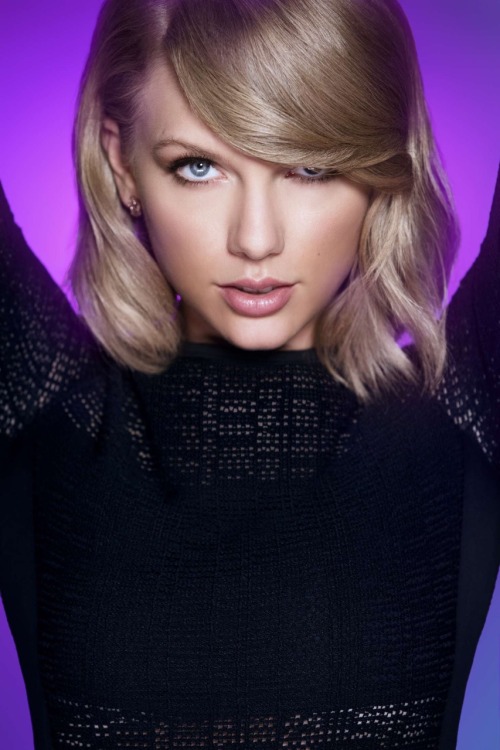


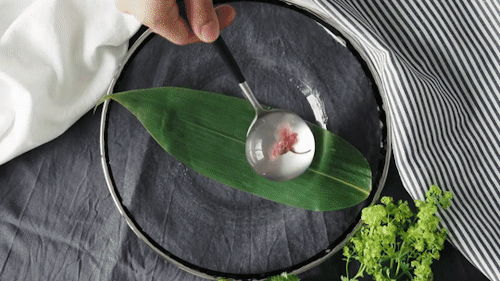


Raindrop Cake 水信玄餅


Women in Exploration: From Human Computers to All-Woman Spacewalks

Since the 19th century, women have been making strides in areas like coding, computing, programming and space travel, despite the challenges they have faced. Sally Ride joined NASA in 1983 and five years later she became the first female American astronaut. Ride’s accomplishments paved the way for the dozens of other women who became astronauts, and the hundreds of thousands more who pursued careers in science and technology. Just last week, we celebrated our very first #AllWomanSpacewalk with astronauts Christina Koch and Jessica Meir.
Here are just a couple of examples of pioneers who brought us to where we are today:
The Conquest of the Sound Barrier

Pearl Young was hired in 1922 by the National Advisory Committee for Aeronautics (NACA), NASA’s predecessor organization, to work at its Langley site in support in instrumentation, as one of the first women hired by the new agency. Women were also involved with the NACA at the Muroc site in California (now Armstrong Flight Research Center) to support flight research on advanced, high-speed aircraft. These women worked on the X-1 project, which became the first airplane to fly faster than the speed of sound.
Young was the first woman hired as a technical employee and the second female physicist working for the federal government.
The Human Computers of Langley

The NACA hired five women in 1935 to form its first “computer pool”, because they were hardworking, “meticulous” and inexpensive. After the United States entered World War II, the NACA began actively recruiting similar types to meet the workload. These women did all the mathematical calculations – by hand – that desktop and mainframe computers do today.
Computers played a role in major projects ranging from World War II aircraft testing to transonic and supersonic flight research and the early space program. Women working as computers at Langley found that the job offered both challenges and opportunities. With limited options for promotion, computers had to prove that women could successfully do the work and then seek out their own opportunities for advancement.
Revolutionizing X-ray Astronomy

Marjorie Townsend was blazing trails from a very young age. She started college at age 15 and became the first woman to earn an engineering degree from the George Washington University when she graduated in 1951. At NASA, she became the first female spacecraft project manager, overseeing the development and 1970 launch of the UHURU satellite. The first satellite dedicated to x-ray astronomy, UHURU detected, surveyed and mapped celestial X-ray sources and gamma-ray emissions.
Women of Apollo
NASA’s mission to land a human on the Moon for the very first time took hundreds of thousands workers. These are some of the stories of the women who made our recent #Apollo50th anniversary possible:

• Margaret Hamilton led a NASA team of software engineers at the Massachusetts Institute of Technology and helped develop the flight software for NASA’s Apollo missions. She also coined the term “software engineering.” Her team’s groundbreaking work was perfect; there were no software glitches or bugs during the crewed Apollo missions.
• JoAnn Morgan was the only woman working in Mission Control when the Apollo 11 mission launched. She later accomplished many NASA “firsts” for women: NASA winner of a Sloan Fellowship, division chief, senior executive at the Kennedy Space Center and director of Safety and Mission Assurance at the agency.
• Judy Sullivan, was the first female engineer in the agency’s Spacecraft Operations organization, was the lead engineer for health and safety for Apollo 11, and the only woman helping Neil Armstrong suit up for flight.
Hidden Figures
Author Margot Lee Shetterly’s book – and subsequent movie – Hidden Figures, highlighted African-American women who provided instrumental support to the Apollo program, all behind the scenes.

• An alumna of the Langley computing pool, Mary Jackson was hired as the agency’s first African-American female engineer in 1958. She specialized in boundary layer effects on aerospace vehicles at supersonic speeds.
• An extraordinarily gifted student, Katherine Johnson skipped several grades and attended high school at age 13 on the campus of a historically black college. Johnson calculated trajectories, launch windows and emergency backup return paths for many flights, including Apollo 11.
• Christine Darden served as a “computress” for eight years until she approached her supervisor to ask why men, with the same educational background as her (a master of science in applied mathematics), were being hired as engineers. Impressed by her skills, her supervisor transferred her to the engineering section, where she was one of few female aerospace engineers at NASA Langley during that time.
Lovelace’s Woman in Space Program

Geraldyn “Jerrie” Cobb was the among dozens of women recruited in 1960 by Dr. William Randolph “Randy” Lovelace II to undergo the same physical testing regimen used to help select NASA’s first astronauts as part of his privately funded Woman in Space Program.
Ultimately, thirteen women passed the same physical examinations that the Lovelace Foundation had developed for NASA’s astronaut selection process. They were: Jerrie Cobb, Myrtle “K” Cagle, Jan Dietrich, Marion Dietrich, Wally Funk, Jean Hixson, Irene Leverton, Sarah Gorelick, Jane B. Hart, Rhea Hurrle, Jerri Sloan, Gene Nora Stumbough, and Bernice Trimble Steadman. Though they were never officially affiliated with NASA, the media gave these women the unofficial nicknames “Fellow Lady Astronaut Trainees” and the “Mercury Thirteen.”
The First Woman on the Moon

The early space program inspired a generation of scientists and engineers. Now, as we embark on our Artemis program to return humanity to the lunar surface by 2024, we have the opportunity to inspire a whole new generation. The prospect of sending the first woman to the Moon is an opportunity to influence the next age of women explorers and achievers.
This material was adapted from a paper written by Shanessa Jackson (Stellar Solutions, Inc.), Dr. Patricia Knezek (NASA), Mrs. Denise Silimon-Hill (Stellar Solutions), and Ms. Alexandra Cross (Stellar Solutions) and submitted to the 2019 International Astronautical Congress (IAC). For more information about IAC and how you can get involved, click here.
Make sure to follow us on Tumblr for your regular dose of space: http://nasa.tumblr.com
How was it possible for the world to be so beautiful and so cruel at the same time?
Gillian Rubinstein (via quotemadness)

石川恋



BMW M3 Interior | via




Helsinki, Finland by Alexandr Bormotin



The Space Shuttle Challenger landed #OTD in 1983.
Here are astronauts Richard Truly & Guion Bluford of Space Transport System 8 (STS-8) grabbing some shut-eye before the wrap up of their mission. This mission had:
The first African American, Guion Bluford, to fly in space
The first night launch and landing during the Space Shuttle Program
Make sure to follow us on Tumblr for your regular dose of space: http://nasa.tumblr.com